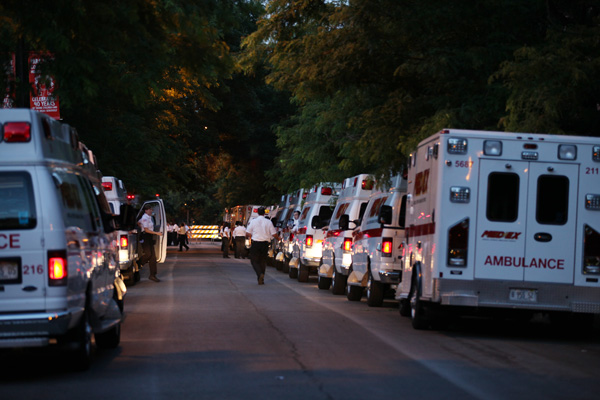
PHOTO: ABEL URIBE/CHICAGO TRIBUNE
So this happened:
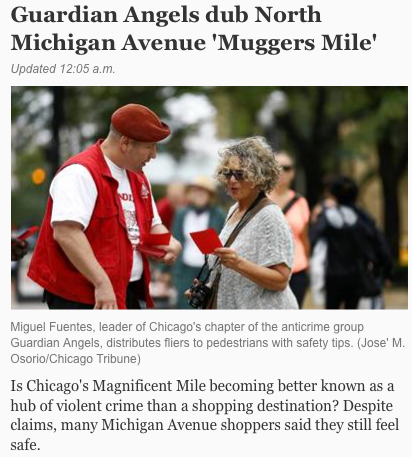
Yes, there are risks in Chicago, more so than in the collar counties. But it's no southwestern Illinois. Or central Wisconsin.
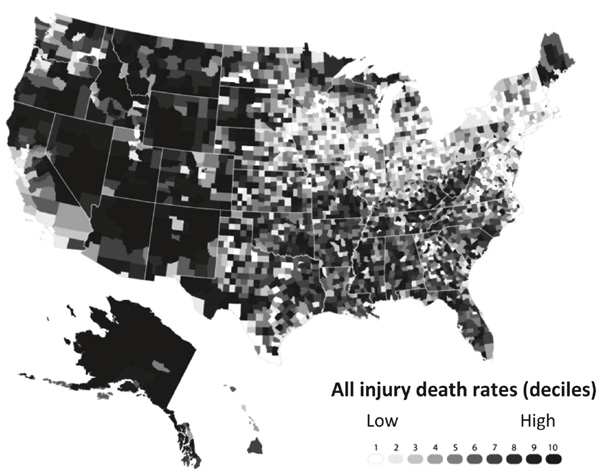
And by the standards of major urban counties, Cook's not bad. Certainly safer than postapocalyptic nightmares like Phoenix, Tampa, and Las Vegas. Although it's not as safe here as it is in Oakland.
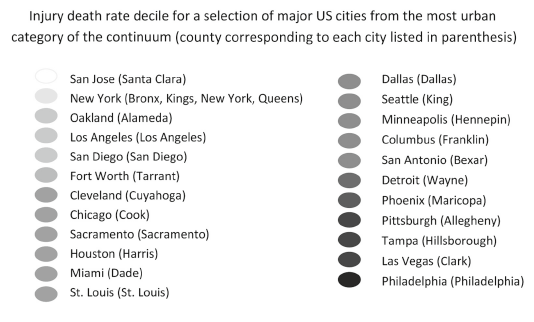
That's from a new study out of the University of Pennsylvania in Annals of Emergency Medicine: "Safety in Numbers: Are Major Cities the Safest Places in the United States?" If by "safety" you mean "not dying from an injury," the answer is yes (the authors didn't evaluate nonfatal injury).
And the nominal reasons are pretty straightforward:
The overall injury death rate was 56.2 per 100,000 persons in the population. The overall death rate for unintentional injury was 37.5 per 100,000, and the overall death rate for intentional injury (homicide and suicide) was 17.0 per 100,000. The most common mechanisms for injury death across all subjects were motor vehicle related, which occurred at a rate of 14.9 per 100,000, and firearm related, which occurred at a rate of 10.4 per 100,000.
So driving is still the most likely thing to kill you. And you're much more likely to in or from a motor vehicle in rural areas than in urban areas:
Motor vehicle crashes were the leading cause of injury death across the population, and the number of motor vehicle crash injury deaths increased sharply with increasing rurality (27.61/100,000 in most rural, 10.58/100,000 in most urban…).
Here's another way of looking at the primary causes of injury death in the United States. The numbers represent the death rate per 100k, and the lines run from more urban on the left to more rural on the right.
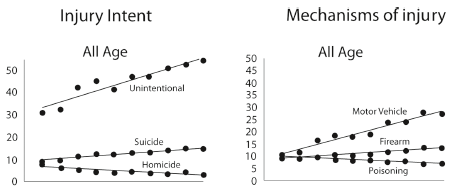
Death from homicide is more common in urban counties (oddly enough, so is death from unintentional poisoning, though the difference is minor), but it's not enough to outweigh the dramatic difference in deaths from motor-vehicle-related causes. The difference is especially dramatic for youth.
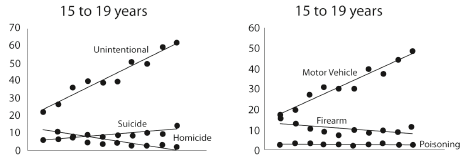
The authors write:
Despite public perception to the contrary, when all types of injuries are considered together, rural areas, not urban, bear a disproportionate amount of injury-related mortality risk in the United States. Although variability among urban areas clearly exists (see Figure 1 city comparisons), when urban areas were considered as a group, risk of serious injury resulting in death was approximately 20% lower than in the most rural areas of the country.
Although our findings support the belief that homicide rates and risk of homicide are significantly higher in urban areas compared with rural, we demonstrate that the magnitude of homicide-related deaths, even in urban areas, is outweighed by the magnitude of unintentional injury deaths, particularly those resulting from motor vehicles.
In fact, the rate of unintentional injury death is more than 15 times that of homicide among the entire population, with the risk resting heavily in rural areas such that the risk of unintentional injury death is 40% higher in the most rural counties compared with the most urban.
For all the disadvantages that city life creates, crime being foremost in the public mind, it also benefits from the effects of concentrated humanity: Transportation alternatives, reduced driving from greater density, more immediate access to generally superior trauma care, better infrastructure, and greater density of professional public safety departments.
In short, the benefits of civilization.
Update: The authors, as noted, didn't get into nonfatal injuries versus fatal injuries. But here's an interesting sample with regard to that when it comes to motor vechicles, from Chicago, suburban Cook, and the surrounding counties. First, fatalities per 100,000:
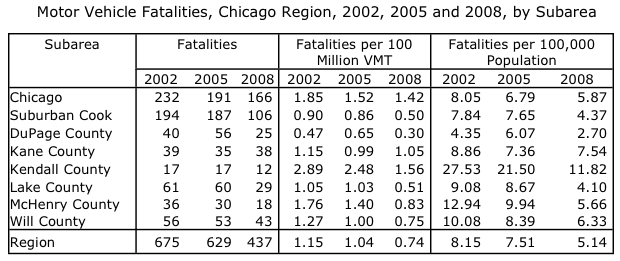
So Chicago has a comparably high number of fatalities by million vehicle miles traveled, but a comparably average number of fatalities per 100,000, suggesting that it's not safer to drive in Chicago, but in Chicago you don't have to drive as much, or at all, so it evens out.
Now, non-fatal injuries:
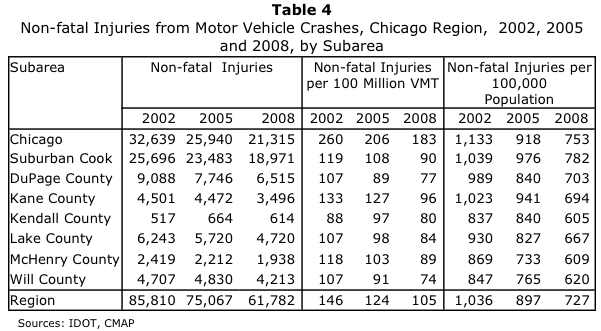
So Chicago and suburban Cook typically have higher rates of non-fatal injuries. Finally, crashes in general:
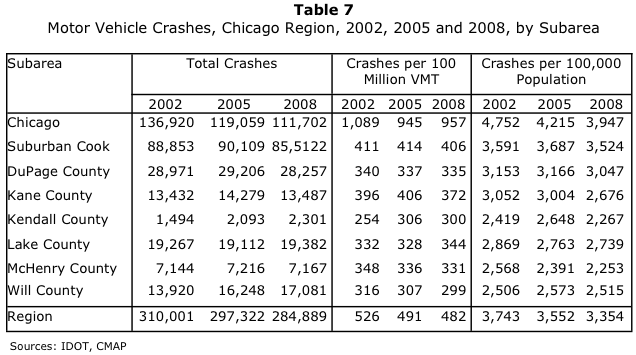
So crash rates are substantially higher in Chicago than in the collar counties, and higher than in suburban Cook. In short: if you drive in Chicago you're more likely to get into a crash, somewhat more likely to be injured in a crash, but no more likely to be killed in a crash, than in the region as a whole.
And you can definitely see the effects of public transportation: there are two or three times as many crashes per 100 million VMT in Chicago (or more, depending on the county and timeframe), but only about 20 percent more crashes per 100,000 people.


